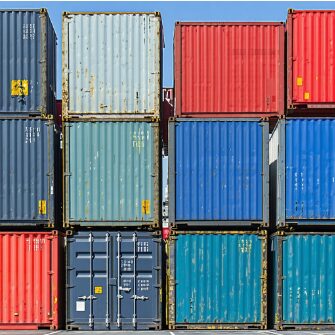

In today’s volatile global trade environment, businesses face the challenge of navigating fluctuating tariffs and trade policies that can significantly impact supply chains. Third-Party Logistics (3PL) providers have emerged as vital partners, offering expertise and strategic solutions to help companies mitigate these challenges and maintain operational efficiency.
Increasing Supply Chain Flexibility through Diversification
As global trade dynamics shift, businesses must prioritize supply chain flexibility to mitigate tariff risks and ensure resilience. One effective strategy is the China-Plus-One approach, which encourages companies to expand sourcing beyond China to countries like Vietnam, India, and South Korea. By diversifying procurement, businesses can reduce exposure to region-specific disruptions and tariff fluctuations. Additionally, reshoring manufacturing—particularly for assembly and distribution—can enhance operational stability, shorten lead times, and minimize reliance on unpredictable global trade policies. Furthermore, reducing single-country dependency is crucial; identifying critical vulnerabilities and implementing contingency plans can safeguard businesses from geopolitical risks. By embracing these diversification strategies, companies can create more adaptive, cost-efficient, and sustainable supply chains in an increasingly uncertain trade environment.
Optimizing Supply Chain Financing and Operations
In an unpredictable trade environment, businesses must adopt strategic financial and operational approaches to remain competitive. Outsourcing to Third-Party Logistics (3PL) providers is a key solution, enabling companies to manage inventory and distribution efficiently while reducing financial and operational risks. Additionally, supply chain financing plays a crucial role in maintaining liquidity—securing financial support mechanisms can strengthen cash reserves and safeguard working capital during uncertain times. To further enhance adaptability, companies can implement dynamic rebalancing strategies, such as shifting supply chain flows through alternative trade corridors like the U.S.-Mexico route, to offset tariff impacts. By optimizing financial and operational strategies, businesses can mitigate risks, improve cost efficiency, and ensure supply chain resilience in an ever-changing global market.
Strengthening Supplier Contracts and Cost Models
To navigate the financial impact of tariffs, businesses must proactively strengthen supplier contracts and refine cost models. Renegotiating supplier terms is a critical step, as incorporating contingency clauses in contracts can help mitigate the impact of sudden tariff increases and allocate risks more effectively between parties. Additionally, implementing total cost of ownership models ensures that tariff risks are factored into financial planning, allowing for a more accurate assessment of costs across key product lines. Businesses should also leverage preferential trade agreements by exploring tariff exemptions and special trade programs that can reduce cost exposure and open access to new markets. By strengthening these financial safeguards, companies can enhance cost predictability and maintain a competitive edge in the face of evolving trade regulations.
Enhancing Scenario Planning & Visibility
Uncertainty in global trade demands proactive risk management strategies. Increasing transparency in supplier networks—by mapping raw material origins and identifying vulnerabilities—can help businesses anticipate tariff-related disruptions before they occur. In addition, companies should model financial impacts using best-, mid-, and worst-case tariff scenarios to compare cost implications and plan accordingly. Another key tactic is conducting competitive analysis to assess how industry peers are responding to tariffs, uncovering opportunities to adjust pricing, sourcing, or logistics strategies. Finally, fostering cross-functional alignment between procurement, finance, and operations teams ensures a coordinated response to shifting trade conditions. With robust scenario planning and enhanced visibility, businesses can make more informed decisions and maintain supply chain stability.
Leveraging Regulatory Loopholes & Exemptions
Businesses can strategically minimize the financial burden of tariffs by taking advantage of regulatory exemptions and compliance strategies. One such approach is utilizing in-transit exemptions, which apply to goods already in transit before tariff enforcement dates, potentially saving significant costs. Additionally, maintaining thorough documentation and compliance records is essential to qualify for tariff exemptions and ensure regulatory adherence. Companies should also reevaluate shipping schedules to align with evolving trade policies, avoiding unnecessary tariff exposure by adjusting transit timelines. By leveraging these regulatory opportunities, businesses can optimize their supply chain costs while remaining compliant with international trade regulations.
Monitoring Global Trade & Political Developments
Staying ahead of global trade policy shifts is crucial for businesses looking to adapt quickly to changing tariffs. Regular policy updates allow companies to monitor new government trade actions, tariff announcements, and countermeasures, enabling them to adjust strategies in real time. Additionally, businesses should engage in advocacy by participating in industry coalitions and trade associations to help shape trade policies that impact their operations. For more specialized guidance, companies can leverage trade consultants, who provide expertise in navigating regulatory uncertainties and optimizing duty structures. By maintaining an agile and informed approach, businesses can proactively manage risks, seize new opportunities, and ensure long-term supply chain resilience.
As tariffs and trade policies continue to evolve, businesses must adopt proactive and adaptable approaches. Partnering with 3PL providers offers strategic advantages, including supply chain diversification, financial optimization, strengthened contracts, enhanced risk management, and informed decision-making. By leveraging these strategies, companies can effectively navigate the complexities of global trade and minimize disruptions to their operations.
Get Started Now! Download the Playbook “Navigating Tariff Impacts on Logistics” Here